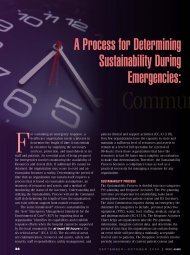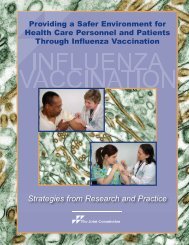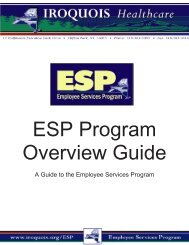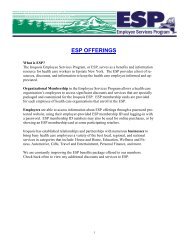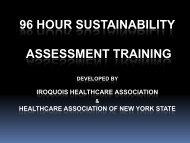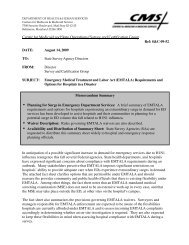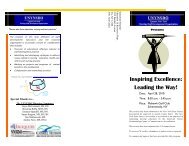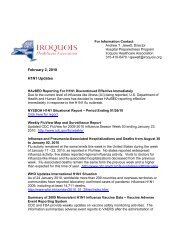NYS Public Health Legal Manual: A Guide for Judges, Attorneys ...
NYS Public Health Legal Manual: A Guide for Judges, Attorneys ...
NYS Public Health Legal Manual: A Guide for Judges, Attorneys ...
Create successful ePaper yourself
Turn your PDF publications into a flip-book with our unique Google optimized e-Paper software.
NEW YORK STATE PUBLIC HEALTH LEGAL MANUAL § 1.71<br />
Court, 407 U.S. 297, 313 (1972) [“physical entry of the home is the chief<br />
evil against which the wording of the Fourth Amendment is directed”].<br />
By contrast, privacy expectations in commercial premises are “particularly<br />
attenuated” in industries that are “closely regulated.” New York v.<br />
Burger, 482 U.S. 691, 700 (1987). Nevertheless, administrative searches<br />
of a home can fall within the “special needs exception” to the requirement<br />
of obtaining a warrant pursuant to a showing of probable cause—”where<br />
special needs, beyond the normal need <strong>for</strong> law en<strong>for</strong>cement, make the<br />
warrant and probable cause requirement impracticable.” Board of Education<br />
v. Earls, 536 U.S. 822, 829 (2002), citing Griffen v. Wisconsin, 483<br />
U.S. 868, 873 (1987).<br />
In applying the special needs exception, the courts per<strong>for</strong>m the same<br />
balancing test of expectations of privacy versus governmental interest.<br />
Where the privacy interest is high, the governmental interest must be substantial.<br />
A substantial government interest would include “exigent conditions”<br />
where the government needs to discover “latent or hidden<br />
conditions” or to “prevent the development of hazardous conditions,”<br />
Board of Education v. Earls, supra, 536 U.S. at 828-29, or seeks to “protect<br />
or preserve life.” Mincey v. Arizona, 437 U.S. 385, 392-93 (1978). In<br />
the context of control of contagious diseases or other health hazards, facts<br />
supporting the seriousness of the threat and the need <strong>for</strong> immediate government<br />
action can justify a warrantless search. See Camara v. Municipal<br />
Court, supra, 387 U.S. at 539 [“nothing we say today is intended to <strong>for</strong>eclose<br />
prompt inspections, even without a warrant, that the law has traditionally<br />
upheld in emergency situations”], citing North American Cold<br />
Storage v. City of Chicago, 211 U.S. 306 (1908) [seizure of contaminated<br />
food]; Jacobson v. Massachusetts, 197 U.S. 11 (1905) [mandatory smallpox<br />
vaccination]; Compaignie Francaise v. Louisiana State Board of<br />
<strong>Health</strong>, 186 U.S. 380 (1902) [health quarantine].<br />
Seizures are subject to the same analysis. A seizure occurs where<br />
“there is some meaningful interference with an individual’s possessory<br />
interests in that property,” which would include the <strong>for</strong>ced ejection of a<br />
person from the property. Soldal v. Cook County, 506 U.S. 56, 60 (1992).<br />
The same balancing test applicable to searches, including the special<br />
needs exception, would apply.<br />
39




